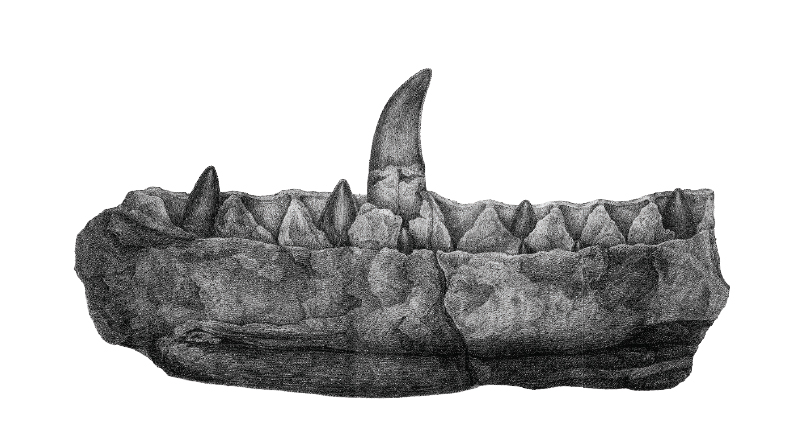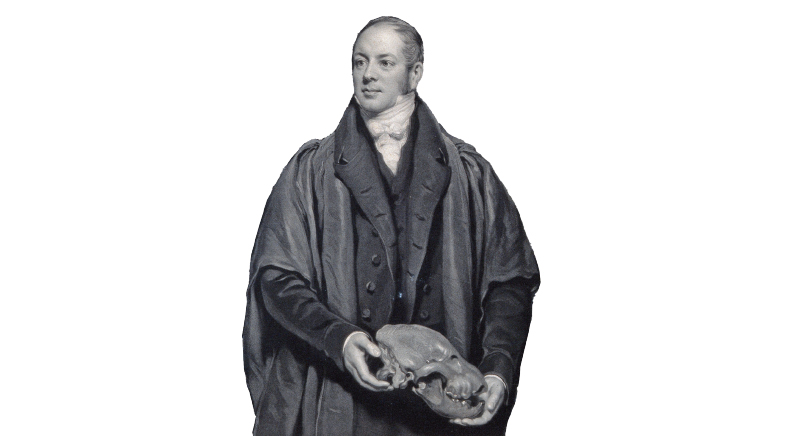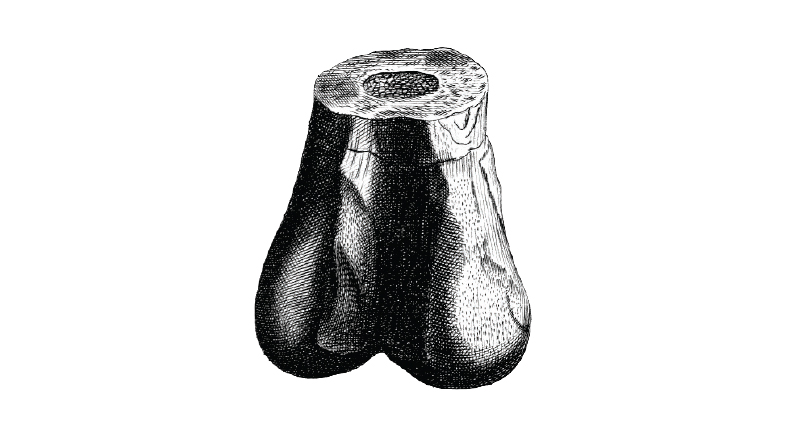1824: The dawn of dino mania
-
- from Shaastra :: vol 03 issue 04 :: May 2024

The first scientific account of a dinosaur was made 200 years ago.
In the early 1800s, when English geologist William Buckland set out to investigate some old bones found in a slate quarry, he had no idea that it would spawn a multi-billion-dollar pop culture phenomenon. Or change human understanding of the Earth's past.

An eccentric yet engaging lecturer and Oxford University's first Reader in geology, Buckland was fascinated by fossilised bones that kept cropping up nearby, in Stonesfield village. Among these were a part of a lower jaw with a single tooth (first picture), a few vertebrae, and some pelvis fragments. They had been discovered at different times over two centuries, but scientists then believed that they belonged to a human giant or a Roman-era elephant. A creationist and an ordained priest, Buckland thought that the bones must have come from a creature killed in the biblical story of Noah's Flood.
HEARTY MEALS

Like the Megalosaurus that he named, Buckland was a man with a voracious appetite. The dinner menu at his house spanned everything from mice and hedgehogs to puppies and crocodiles. The "vilest" of the animals he ate, he admitted, were the common mole and the bluebottle fly. He even claimed (bit.ly/buckland-food) to have once consumed the heart of the dead King Louis XIV, which had been robbed from his grave during the French Revolution.
In 1824, Buckland was appointed President of the Geological Society of London. At the first meeting he presided over, he made a grand announcement (bit.ly/buckland-1824). The bones he had gathered likely belonged to an extinct carnivorous creature that he and fellow researcher William Conybeare christened Megalosaurus, meaning "great lizard". It was the first scientific description and naming of a dinosaur, even if people didn't know what dinosaurs were at that time. That revelation would come 18 years later (bit.ly/dinosaur-name), when English naturalist Richard Owen came up with the term Dinosauria, based on fossils of three creatures, one of which was the Megalosaurus.
The Megalosaurus, Buckland claimed, looked like a crocodile walking on four legs, albeit a bit more upright. Based on the remains of crocodile teeth and turtle shells in the same quarry, he conjectured that the Megalosaurus might have lived on both land and water. He also thought that it must have been over 40 feet long and weighed as much as an elephant. Buckland did not arrive at these conclusions by himself. Apart from Conybeare, he was helped in his research by his wife, Mary Morland – a geologist and an illustrator who created drawings of the Stonesfield fossils and accompanied him on field visits – and by French scientist and "father of palaeontology" Georges Cuvier, who supported his theory that the bones belonged to a giant reptile.
NAME INFAME

Among the early Megalosaurus fossils unearthed was a large thigh bone (pictured) that had the misfortune of resembling human testicles. The creature it was believed to belong to was given the unflattering name of Scrotum humanum. For years, scientists debated whether it should have remained the original name for the dinosaur that Buckland had described. However, both the name and the bone became lost in the mists of time.
Today, scientists know that the creature Buckland described lived about 166 million years ago, walked on two strong hind legs, and was only half as long as the more famous Tyrannosaurus rex. A meat-eater like the T. rex, the Megalosaurus must have preyed on smaller contemporaries like the spiky Stegosaurus.
Two hundred years after it was named, the Megalosaurus still poses many mysteries for scientists. No one has been able to piece together a complete skeleton of the creature. For many decades, the Megalosaurus was also considered a "wastebasket taxon" under which many other dinosaur species were incorrectly grouped. Now, however, scientists think that there was probably just the one species – Megalosaurus bucklandii – named after the scientist who, by introducing it to the world, gave a fillip to the fledgling field of palaeontology.
Ranjini Raghunath is a Bengaluru-based science writer and editor.
Have a
story idea?
Tell us.
Do you have a recent research paper or an idea for a science/technology-themed article that you'd like to tell us about?
GET IN TOUCH














